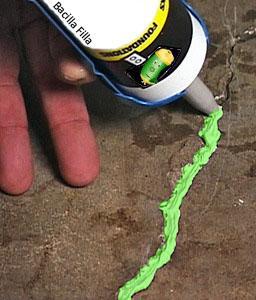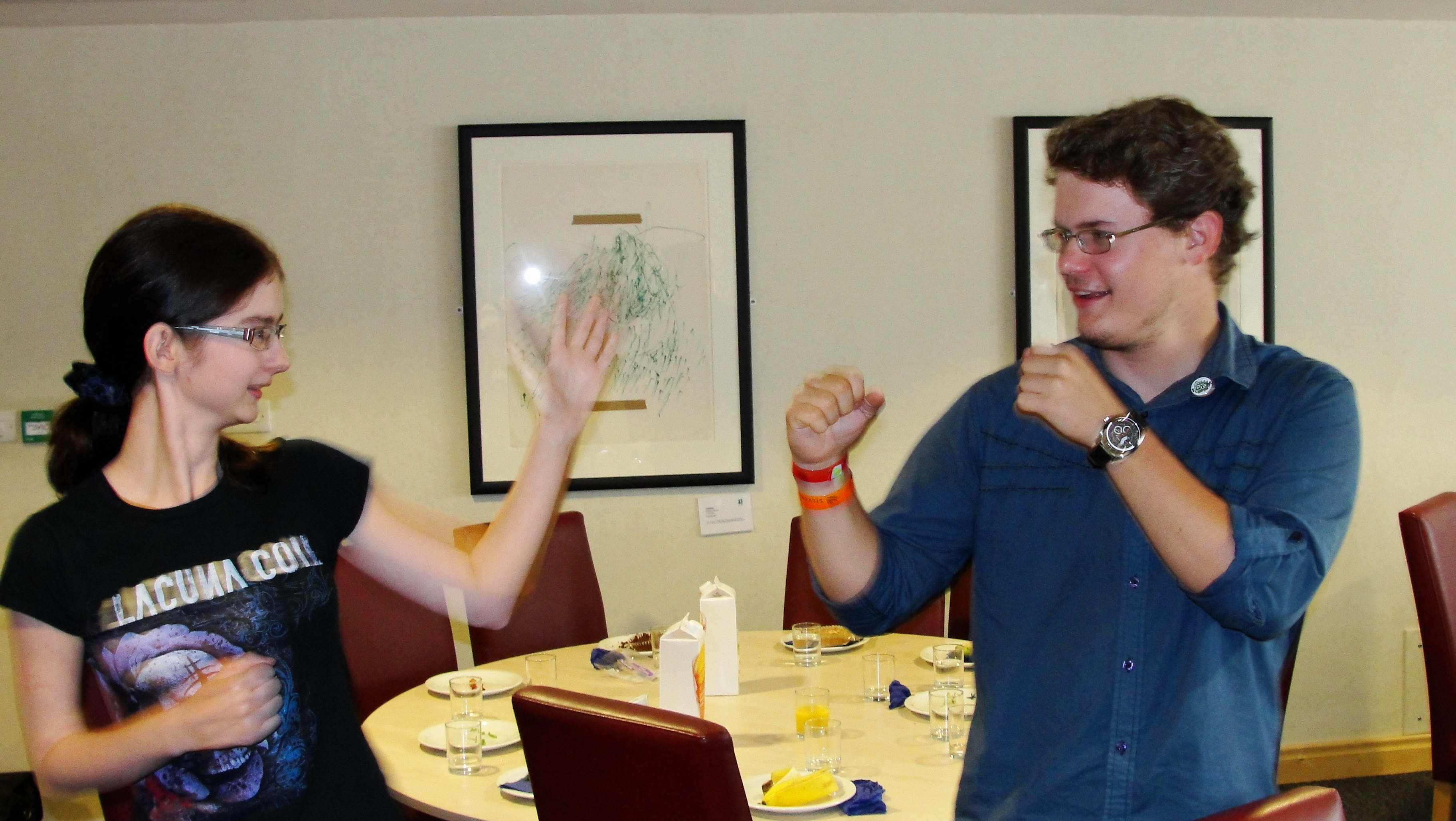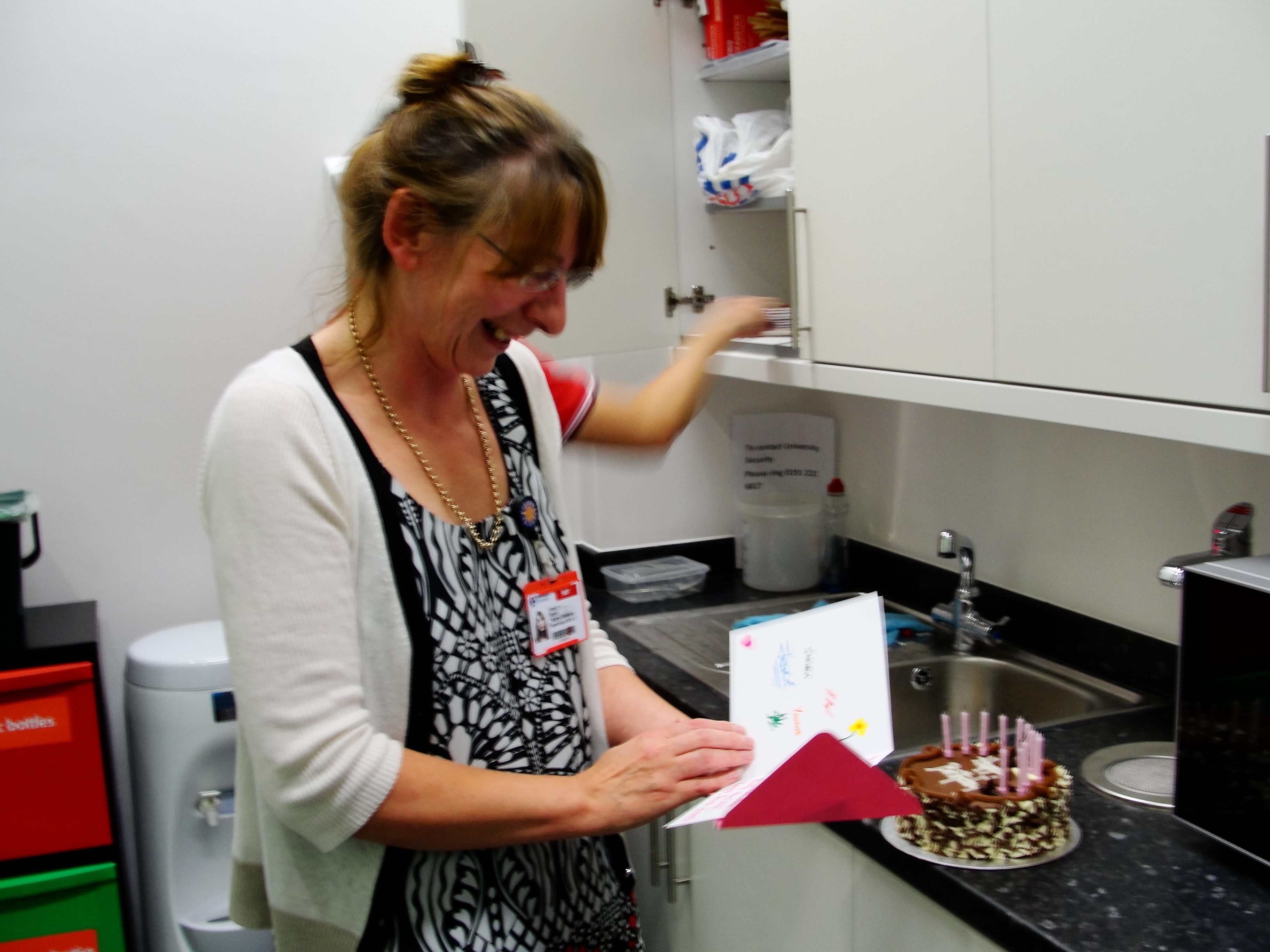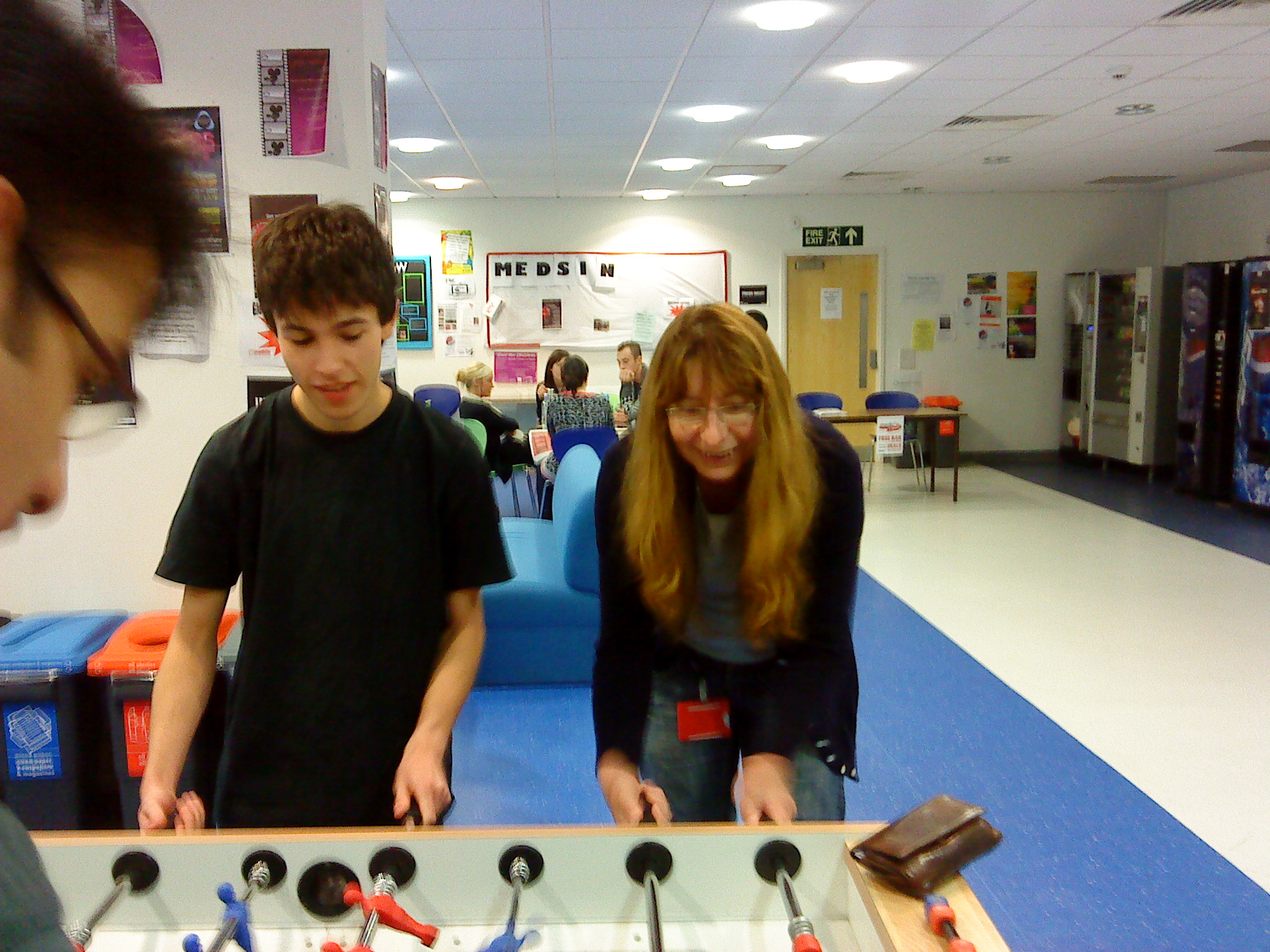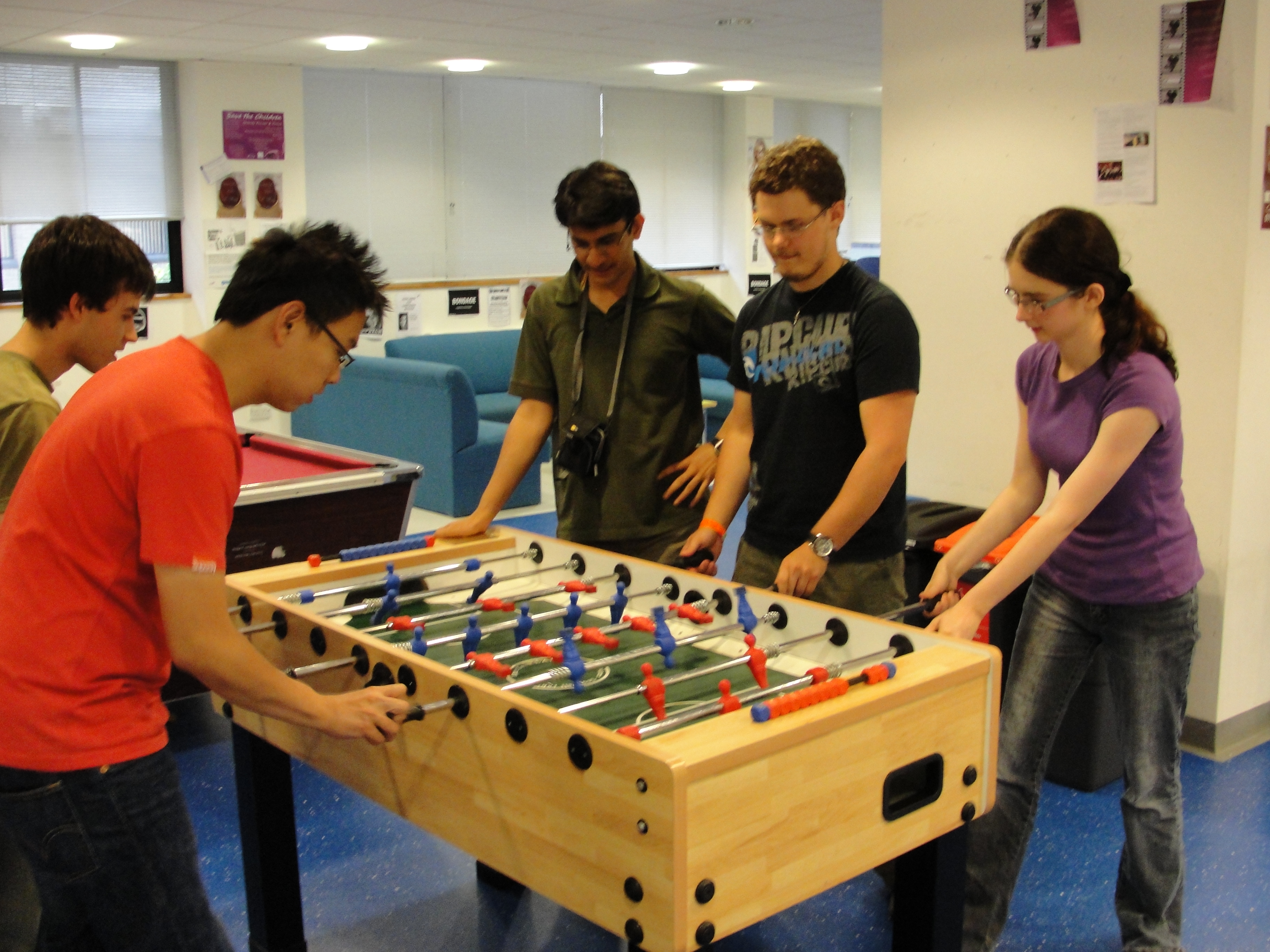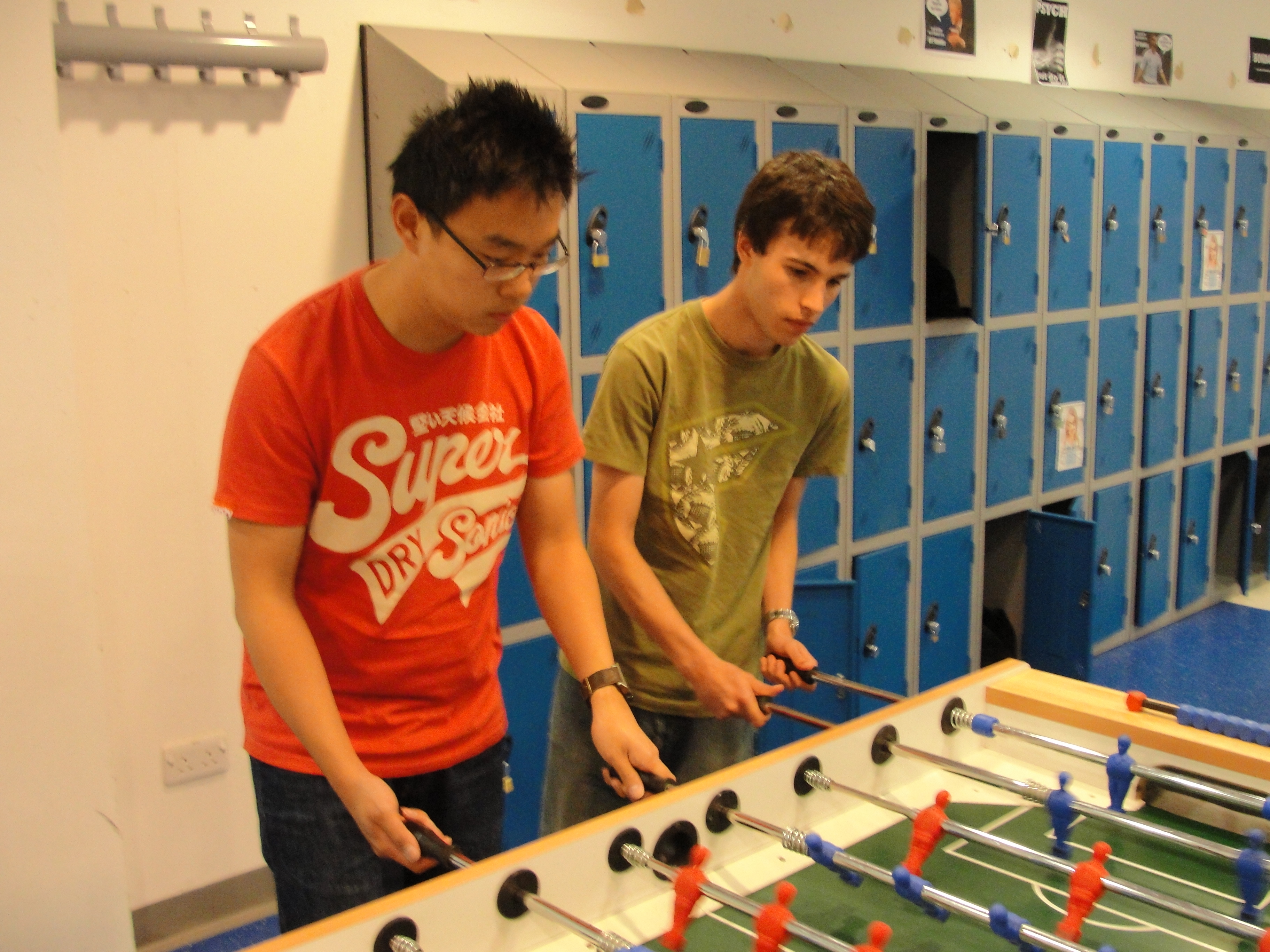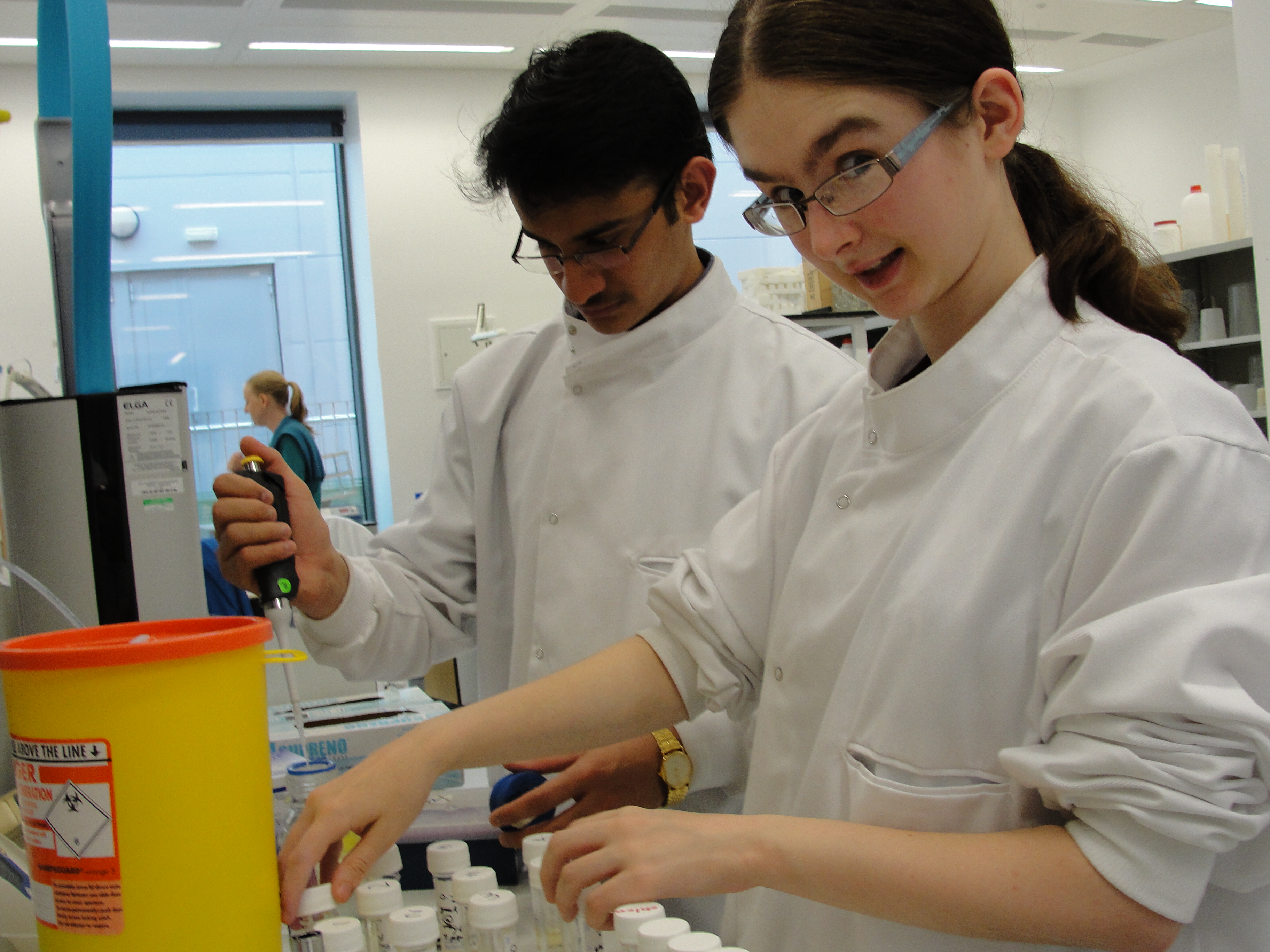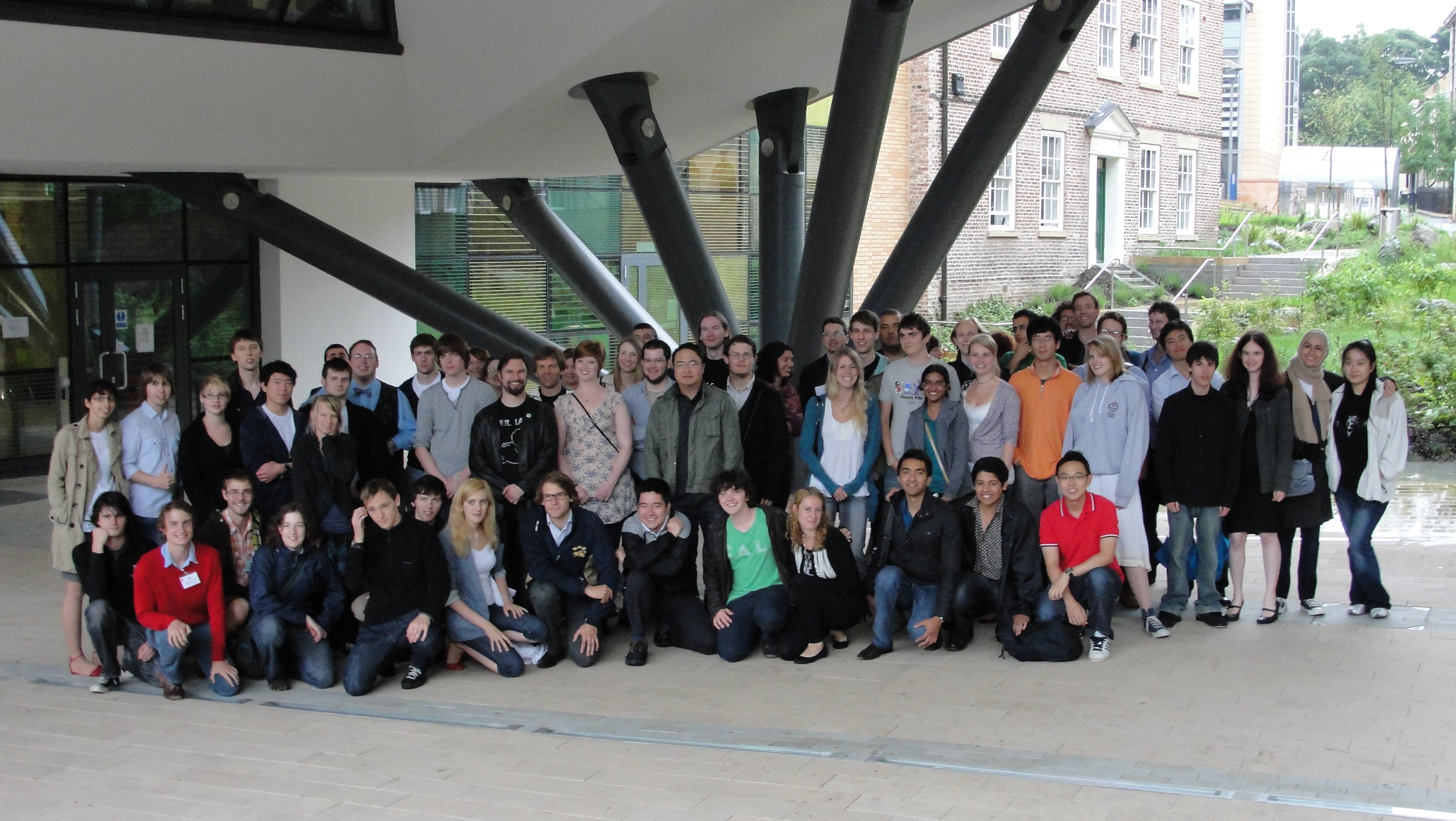|
|
| (66 intermediate revisions not shown) |
| Line 1: |
Line 1: |
| | {{Team:Newcastle/mainbanner}} | | {{Team:Newcastle/mainbanner}} |
| | | | |
| - | ==Awards== | + | ==Photos== |
| | | | |
| - | [[Team:Newcastle/Medals| Aims and Medals]] | + | ====Team Photos==== |
| | + | {| |
| | + | |[[Image:teamnewcastlephoto1.jpg| 300px]] |
| | + | |[[Image:teamnewcastlephoto2.jpg| 300px]] |
| | + | |[[Image:Newcastle iGEM Teampic.jpeg| 300px]] |
| | + | |} |
| | | | |
| - | ==Jamboree== | + | ====Random Photos==== |
| | | | |
| - | [[Jamboree| Jamboree]] | + | [[Image:newcastle_funny1.jpg|200px]] [[Image:newcastle_funny3.jpg|300px]] [[Image:newcastle_funny5.jpg|300px]] [[Image:newcastle_funny4.jpg|300px]] [[Image:newcastle_funny2.jpg|300px]] [[Image:newcastle_funny6.jpg|300px]] |
| | + | [[Image:newcastle_funny7.jpg|300px]] [[Image:newcastle_funny8.jpg|300px]] [[Image:newcastle_funny9.jpg|300px]] |
| | | | |
| - | ==Poster== | + | ====Hoppings Photos==== |
| - | | + | |
| - | [[Jamboree#Posters|Poster Requirements]]
| + | |
| | | | |
| | + | {| style="width:100%;" cellpadding="4" cellspacing="4" border="0" |
| | + | |- |
| | + | |style="background-repeat: no-repeat; background-color: #ffffff; height:200px; width:300px"|[[Image:Newcastle_iGEM_funfair.jpeg]] |
| | + | |style="background-repeat: no-repeat; background-color: #ffffff; height:200px; width:300px"|[[Image:Newcastle_iGEM_funfair2.jpeg]] |
| | + | |style="background-repeat: no-repeat; background-color: #ffffff; height:200px; width:300px"|[[Image:Newcastle_iGEM_funfair3.jpeg]] |
| | + | |- |
| | + | |} |
| | | | |
| | | | |
| | | | |
| | =='''UK iGEM Get Together'''== | | =='''UK iGEM Get Together'''== |
| | + | [[UK_Meetup_2010#UK_iGEM_get-together.2C_Newcastle.2C__20th_and_21st_July.2C_2010| UK get together]] |
| | | | |
| - | ===Programme=== | + | [[Image:newcastle_ukget.jpg|800px|centre]] |
| | + | ====Programme==== |
| | | | |
| | [[Media:Programme_for_UK_Gathering_at_Newcastle.pdf|The Programme for UK Gathering at Newcastle]] | | [[Media:Programme_for_UK_Gathering_at_Newcastle.pdf|The Programme for UK Gathering at Newcastle]] |
| | | | |
| - | [[UK_Meetup_2010#UK_iGEM_get-together.2C_Newcastle.2C__20th_and_21st_July.2C_2010| UK get together]]
| + | ====Presentation==== |
| | | | |
| | + | [[Media:Final presentation 8.0!.pdf|Our Presentation for the UK Gathering at Newcastle]] |
| | | | |
| - | | + | ====Questions==== |
| - | ===Presentation=== | + | |
| - | | + | |
| - | [[Media:Final presentation 8.0!.pdf|Our Presentation for the UK Gathering at Newcastle]]
| + | |
| | | | |
| | Questions asked about our presentation: | | Questions asked about our presentation: |
| Line 38: |
Line 49: |
| | For answers to these questions see [[Media:Concrete.pdf|Deena's concrete lecture]] | | For answers to these questions see [[Media:Concrete.pdf|Deena's concrete lecture]] |
| | | | |
| - | ===Photos=== | + | ==Attribution and Contribution== |
| - | | + | |
| - | ====Presentation Photos====
| + | |
| - | | + | |
| - | ====Team Photos====
| + | |
| - | | + | |
| - | ====Team Building Photos====
| + | |
| - | | + | |
| - | ====Random Photos====
| + | |
| - | | + | |
| - | | + | |
| - | | + | |
| - | ==Ethics==
| + | |
| - | | + | |
| - | ===Synthetic Biology: Background===
| + | |
| - | | + | |
| - | Synthetic biology is a new research field that has a big potential in coming up with solutions for our everyday problems. However, ethical issues have been raised since the start of development in this field. Here we will discuss the ethical issues that our project will bring.
| + | |
| - | | + | |
| - | ====Biohackers====
| + | |
| - | | + | |
| - | In this field, there are always people that view synthetic biology's negative aspects with concern, like worrying about the production of pathogens to be used as weapons. Their fears are that people will hack into systems to obtain data that might be used to do this. Therefore, we have to be very careful with the products of our research so that they remain safe in our hands.
| + | |
| - | | + | |
| - | ====Playing God!!!====
| + | |
| - | | + | |
| - | | + | |
| - | In synthetic biology, we control the lives of bacteria. We insert proteins into bacteria to make them do what we want them to do. We make them kill themselves at the end of their job because they might be released into the environment and be harmful to other living things. It shows that we do not really treat the single-celled organism as life. However, we are coming up with a novel solution for the environment by healing concrete cracks.
| + | |
| - | | + | |
| - | ====Biosecurity==== | + | |
| - | | + | |
| - | Bacteria might be harmful to the environment and living things around. Considering the fact that they are such small organisms and could not be spotted with the naked-eye if they are released in air, we make them kill themselves with the ‘kill switch’ biobrick. This can be very inconsiderate standing in a bacteria’s point of view, but it is the novel thing to do to avoid them hurting other living organisms.
| + | |
| - | | + | |
| - | ===Construction: Background===
| + | |
| - | | + | |
| - | Cracks form in concrete structures as soon as they set. These cracks continue to grow in size if they are not repaired due to the weight of the structure, imposed load, freeze-thaw effect and wind loading. The bigger the cracks are, the higher the rate of water seeping into the steel reinforcements, causing them to corrode and thus weakening the structure. Therefore, we would like to use Bacilla Filla to fill up these cracks before things get worse.
| + | |
| - | | + | |
| - | ====Environmental Disaster====
| + | |
| - | | + | |
| - | Concrete is a very widely used material in construction. In fact, cement that is used to make concrete is the second most widely used substance in the world after water. Some building structures have to be demolished because the cracks formed appear to be threatening the strength of the structures. These buildings have to be rebuilt in order to reinforce its tensile strength. This is an unsustainable method of recovery because cement is a material that requires a lot of energy to be produced. In the production of cement, the rotating kiln requires the temperature to be between 1350°C-1400°C, which not only uses up a lot of energy resources, but also produces a lot of carbon dioxide. These carbon dioxide contributes to the green house effect which then leads to global warming. Therefore, our project can help to reduce renovation of buildings which in turn lowers the amount of cement that has to be produced each year.
| + | |
| - | | + | |
| - | ====Post-Chernobyl Disaster====
| + | |
| - | | + | |
| - | The nuclear power plant combustion that occurred in Chernobyl on 26 April 1986 has allowed radioactive elements to be released into the environment, threatening the health of people living within close proximity of the plant. Therefore, a shelter, the Shelter Implementation Plan (SIP) which will be completed in 2012 is currently being built to cover up the area that where the accident occurred so as to make it environmentally friendly. However, if cracks were to form, something that inevitably occurs for building structures, those radioactive elements will still be dispersed into the environment. With the help of our project, those cracks will be able to be filled-up and the area will be safe again.
| + | |
| - | | + | |
| - | ==Health and Safety==
| + | |
| - | | + | |
| - | ===Laboratory===
| + | |
| - | | + | |
| - | In iGEM, lab work is essential for the construction and characterization of numerous BioBricks, required for our project. However, in order to work safely in the lab, a Health and Safety assessment must be carried out in order to prevent any harm exposure, chemically (chemicals), biologically (bacteria/yeasts/fungi) and physically (machineries).
| + | |
| - | | + | |
| - | Our lab work for the summer is situated in the Centre for Bacteria Cell Biology (CBCB) in Newcastle University. The facility is regarded as Biosafety level 1, which is explained below:
| + | |
| - | | + | |
| - | * Involves working with well-characterised agents, e.g. non-pathogenic ''E. coli''
| + | |
| - | * Does not normally cause diseases in healthy individuals
| + | |
| - | * Bio-hazardous materials are kept minimal, e.g. gloves and sometimes facial protection against U.V light
| + | |
| - | * The laboratory is not separated from the building
| + | |
| - | * Contaminated materials are left in open rubbish containers
| + | |
| - | * All lab materials are decontaminated by autoclave
| + | |
| - | | + | |
| - | | + | |
| - | Our project does not actually consist of hazardous agents. The focus of the project is to use ''Bacillus subtilis'', which is not known to be a human pathogen, although rarely causes food poisoning when contaminated into food.
| + | |
| - | | + | |
| - | | + | |
| - | Here is a list of lab Health and Safety notes:
| + | |
| - | | + | |
| - | | + | |
| - | '''GENERAL'''
| + | |
| - | | + | |
| - | * Always work with another person if the agents are hazardous
| + | |
| - | * No smoking, drinking or eating in the lab
| + | |
| - | * Benches should be kept clean and free of space
| + | |
| - | * Close bottle lids after use every time
| + | |
| - | * If spillages occur, clean up immediately
| + | |
| - | | + | |
| - | | + | |
| - | '''PERSONAL PROTECTION'''
| + | |
| - | | + | |
| - | * Lab coat should be worn at all times in the lab (buttoned up) and wear goggles and gloves when required
| + | |
| - | * U.V protection must be worn when working involving U.V
| + | |
| - | * Long hairs must be tied back
| + | |
| - | | + | |
| - | '''HYGIENE'''
| + | |
| - | | + | |
| - | * Wash hands after entering, and before leaving the lab thoroughly
| + | |
| - | * Do not touch or put anything into your mouth
| + | |
| - | | + | |
| - | | + | |
| - | '''EMERGENCIES'''
| + | |
| - | * Always know the location of fire exits and fire extinguishers, as well as first aid kits
| + | |
| - | | + | |
| - | | + | |
| - | '''STORAGE AND DISPOSAL'''
| + | |
| - | | + | |
| - | * Pipette tips, broken glasses, tube should be thrown into sharps bin
| + | |
| - | * Used cylinders should be auto-claved
| + | |
| - | | + | |
| - | ===Environment===
| + | |
| - | | + | |
| - | The main problem in our project is that ''Bacillus subtilis'' may escape to the environment when we use them to spray onto the buildings. Even though the bacterium is not a human pathogen, it may still cause food contamination and rarely food poisoning. To overcome this problem, we plan to devise a kill-switch, which targets specifically ''Bacillus subtilis'' strains, and hopefully, making the project environmental friendly.
| + | |
| - | | + | |
| - | ==Safety Issues==
| + | |
| - | | + | |
| - | These are the safety questions for the judging form:
| + | |
| - | | + | |
| - | '''1. Would any of your project ideas raise safety issues in terms of:'''
| + | |
| - | | + | |
| - | * Researcher Safety:
| + | |
| - | | + | |
| - | Throughout the whole project, we used the strains ''E. coli'' DH5α and ''Bacillus subtilis'' 168. Both of the strains are known to be harmless. However, we carefully follow the Class II microbiology safety regulations in the UK while working with those strains.
| + | |
| - | | + | |
| - | We worked in the Centre for Bacterial Cell Biology (CBCB) Building of Newcastle University for the entire project. There is a general list of rules and regulations for everyone to follow in the lab, which can be found [[Team:Newcastle/Lab_Safety|here]]. One of our advisors, Dr Wendy Smith, gave us a guide through the safety issues in the first week, which is the introduction week to prepare us for the lab.
| + | |
| - | | + | |
| - | We also got to make concrete in the structures lab, which requires appropriate safety regulations to be obeyed. When we were in the structures lab, we wore safety goggles, steel toe cap boots and gloves, which will be able to protect us from lab based accidents.
| + | |
| - | | + | |
| - | * Public Safety:
| + | |
| - | Our project is about repairing cracks formed on the concrete surface with ''Bacillus subtilis'' 168. It is a lab strain and is non- pathogenic to humans. Before spraying onto the concrete surface, there is a chance of them escaping into the environment. Spores in the absence of media won't be able to germinate and spread in the wild. At the same time, to prevent humans from inhaling the spores, it is advisable that while spraying the spores onto the concrete surface, the personnel should wear a face mask. Also if the spores are ingested by humans by mistake, then they will be able to pass through the alimentary canal without causing any reaction in the body.
| + | |
| - | | + | |
| - | * Environmental Safety:
| + | |
| - | The ''Bacillus subtilis'' 168 that we chose to use for this project has been a lab strain for more than 50 years therefore it has lost some of the genes which are important for them to survive in the wild like synthesizing tryptophan, an essential amino acid which due to reductive evolution, has lost the ability to produce it, thus it requires a medium containing tryptophan for its growth and survival. Although they are non-pathogenic, releasing genetically engineered bacteria into the environment has been an issue since the 1970s. There are numerous reviews which discuss the issues relating to the safety of introducing genetically engineered organisms into systems such as soil. One of our intructors (Anil Wipat) studied issues relating to the release of genetically engineered microorganisms into the soil as part of his PhD [1]. Many systems have been proposed to try to ensure the safety of GM organisms in the environment. For example, we designed the [[Team:Newcastle/Non-target-environment_kill_switch|kill switch]] Biobrick part which will allow the bacteria to kill themselves after sensing the environment around them. Therefore even if it escapes away from the lab, it will not be able to survive in the wild.
| + | |
| - | | + | |
| - | '''2. Do any of the new BioBrick parts (or devices) that you made this year raise any safety issues?'''
| + | |
| - | | + | |
| - | We do not see any safety issues for the new Biobricks parts that we made this year.
| + | |
| - | | + | |
| - | '''3. Is there a local biosafety group, committee, or review board at your institution?'''
| + | |
| - | | + | |
| - | Yes there is a biosafety group at the Centre for Bacterial Cell Biology and Institute of Cell and Molecular Biosciences, which includes the Institute Safety Officer (SSO), Biological Safety Supervisor (BSS), Genetic Modification Chairperson (GMC), Radiation Protection Supervisor (RPS), Laser Protection Officer and Lab Heads. They have reviewed the safety of the lab from time to time during the duration of the project.
| + | |
| - | | + | |
| - | * If yes, what does your local biosafety group think about your project?
| + | |
| | | | |
| - | They are aware about the whole project and they reviewed it thoroughly with the whole team. They discussed about each and every Biobrick part in detail and found no safety issues with it.
| + | [[Team:Newcastle/Attribution and Contribution|Attribution and Contribution]] |
| | | | |
| - | '''4. Do you have any other ideas how to deal with safety issues that could be useful for future iGEM competitions? How could parts, devices and systems be made even safer through biosafety engineering?'''
| + | {{Team:Newcastle/footer}} |

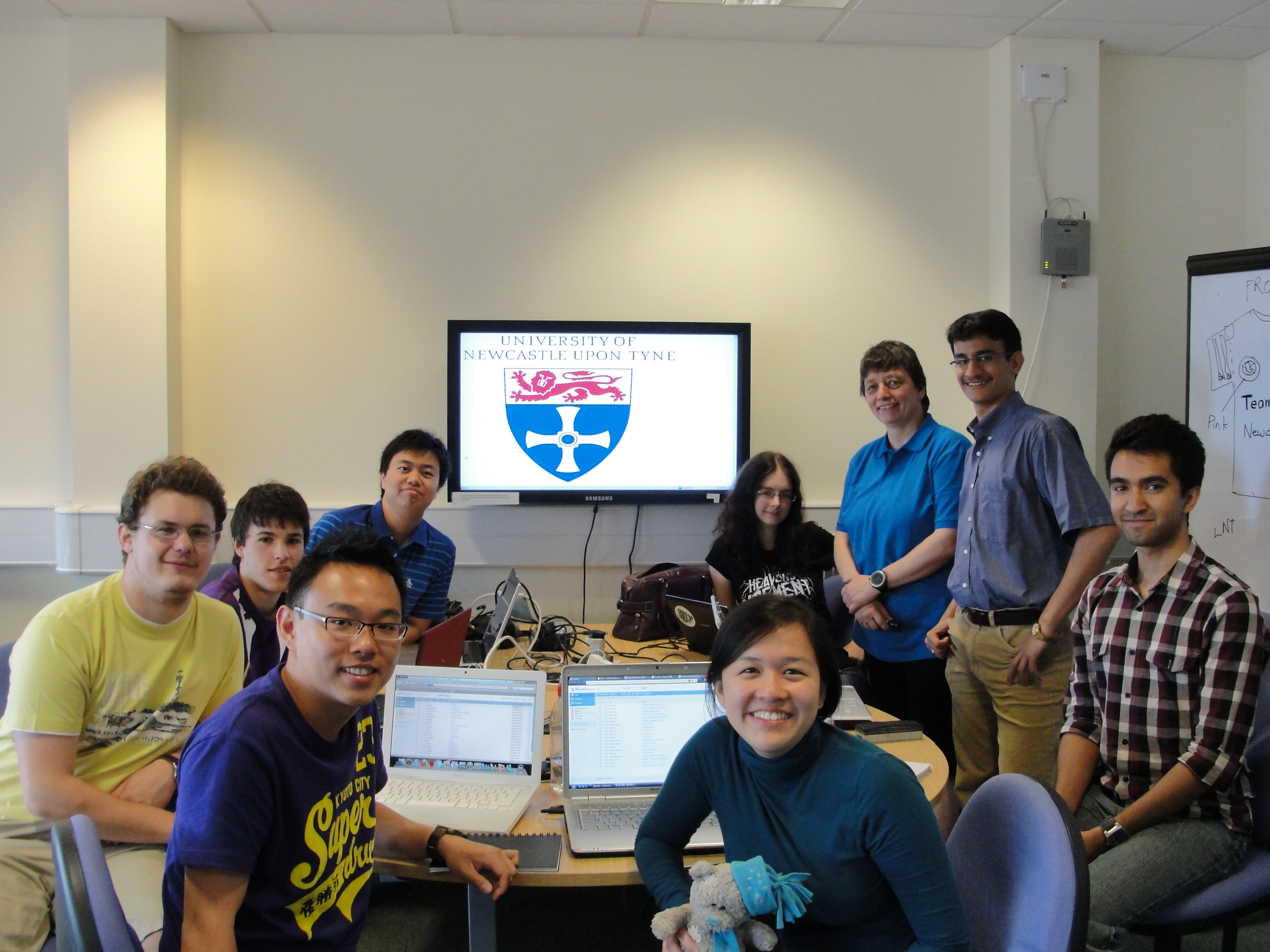
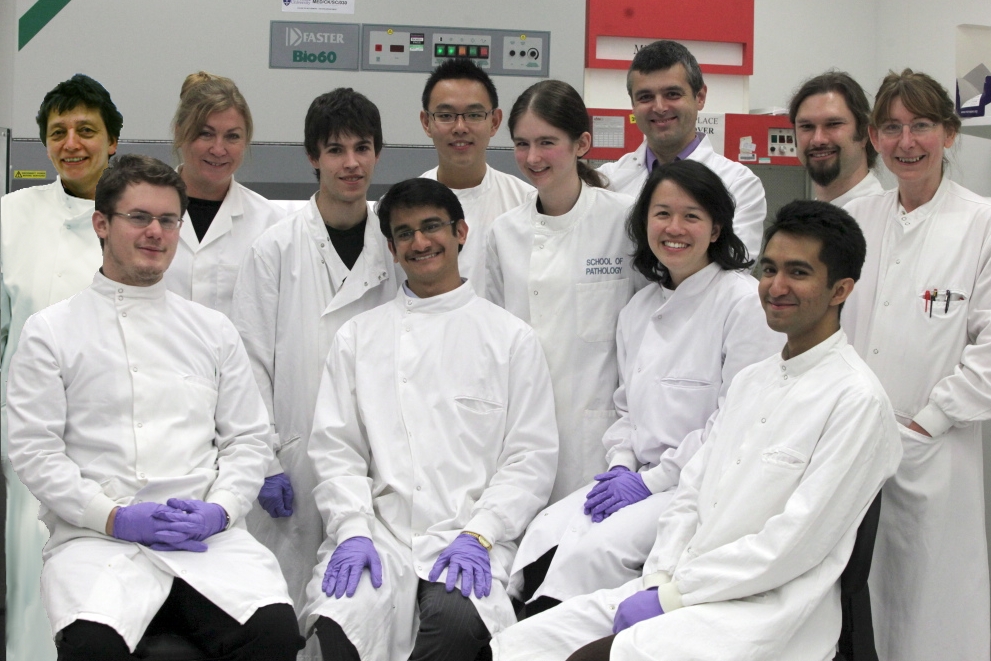


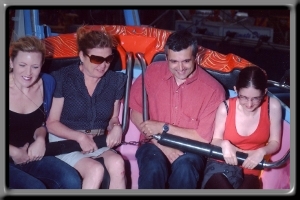



 "
"
